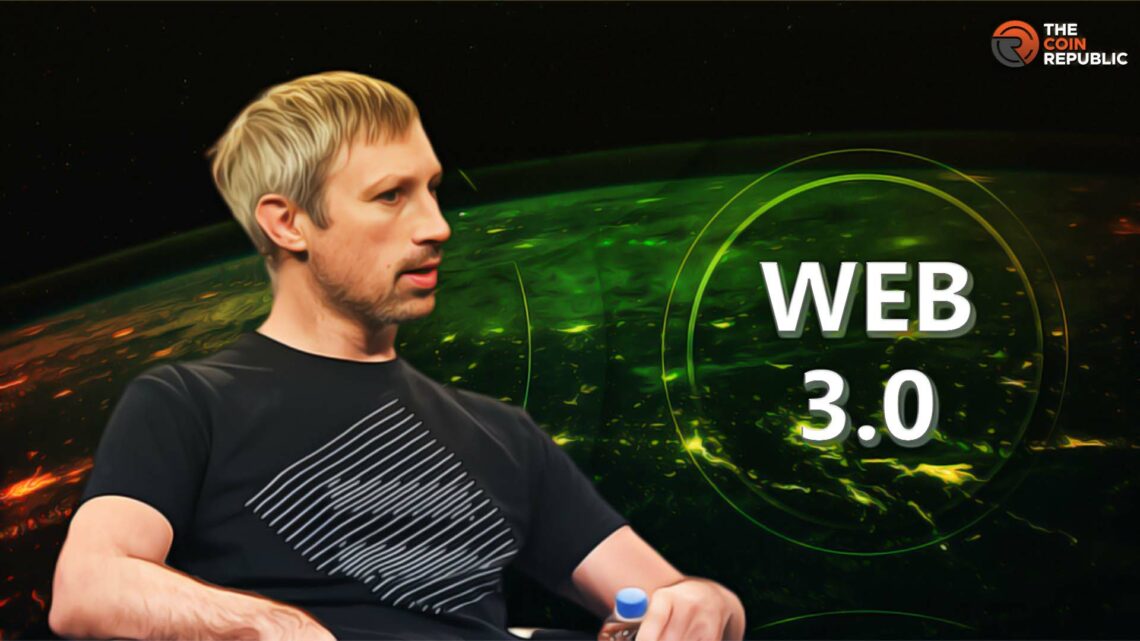- 1 Gavin Wood had 15 years of experience in coding open-source programs by the time he joined Ethereum in 2013.
- 2 Gavin Wood co-founded Ethcore which was later renamed as Parity Technologies.
Who is Gavin Wood?
Gavin Wood started his career as a developer building cross-platform game engines at Frontier Development. These engines helped gamers to connect with each other from different platforms. For example- a gamer playing from PlayStation can connect to a player gaming from another platform.
Wood developed the first C++ programming language workbench in 2007. In 2011, he worked as the Technical Director at Lancaster Logic Response, helping develop real-time lights. By the time he joined the Ethereum team in 2013, Wood had 15 years of experience in coding open-source programs.
Gavin Wood joined the Ethereum team the same year and helped build the technical foundation for the Ethereum blockchain. In 2014, he developed the Ethereum yellow paper and Solidity programming language to help developers create smart contracts on the blockchain.
The Ethereum yellow paper gave technical details on the working of the Ethereum Virtual Machine (EVM) and smart contracts. The Ethereum Virtual Machine prevents attacks on the network by ensuring that transactions and smart contracts are executed through a network of decentralized nodes.
Intending to improve the network’s security, Gavin Wood co-founded Ethcore, a platform that helps developers build Ethereum clients. These clients ensure the accuracy of data added to the blockchain.
Parity Ethereum is an Ethereum client written in Rust programming language that allows users to run to nodes on the network while following the blockchain protocol. It stores decryption keys used to decode externally stored documents. These documents contain confidential information, locked by code. Portions of the key are distributed to the nodes on the Ethereum network, ensuring privacy of the document.
Ethcore also designed the Parity Wallet, a multi-key that requires more than one private key to transfer ETH.
Ethcore was renamed as Parity Technologies, and expanded its focus to include creating clients for other platforms, aside from Ethereum. The team designed Substrate, a development framework, to help developers build blockchains or sidechains to existing blockchains.
Parity Technology and the Polkadot Blockchain
The Polkadot blockchain was developed by Parity Technologies to enable layer-1 blockchains to interact with each other. Polkadot does this by acting as a bridge between the layer-1 blockchain, allowing the transfer of data and liquidity. Its genesis block was launched in 2020.
Parity Technologies also developed Kusama, a testnet for the Polkadot protocol. Developers who want to build dApps on Polkadot can use Kusama to experiment.
Parity Technologies collaborated with the Zcash network in 2019 to build an alternative Zcash client called Zebra. This client helps developers to detect and solve bugs that can affect the network’s algorithm without disturbing its operation. It also allows Rust developers to contribute to the Zcash network.
Wood also founded the Web3 Foundation in 2017 to fund research and development of Web3 technologies.

With a background in journalism, Ritika Sharma has worked with many reputed media firms focusing on general news such as politics and crime. She joined The Coin Republic as a reporter for crypto, and found a great passion for cryptocurrency, Web3, NFTs and other digital assets. She spends a lot of time researching and delving deeper into these concepts around the clock, and is a strong advocate for women in STEM.


 Home
Home News
News






